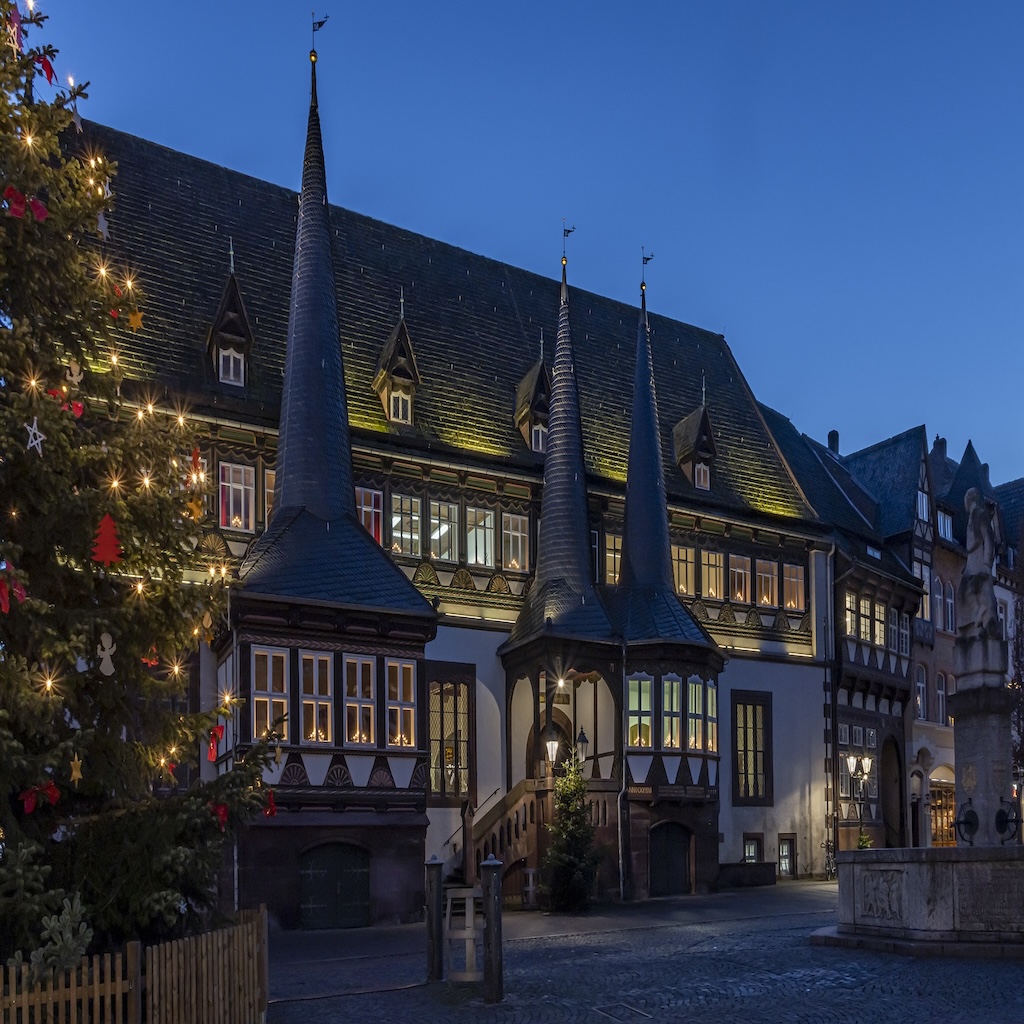
Christmas, while celebrated globally, takes on unique flavors in different corners of the world. From festive meals to quirky customs, these diverse traditions reflect local history, values, and cultural identities. Here is a journey around the globe to discover how 10 various cultures add their special touch to the holiday season.
1. KFC Christmas Dinner – Japan –
In Japan, an unusual Christmas tradition has taken root: eating Kentucky Fried Chicken for Christmas dinner. This custom began in 1974 when KFC launched a highly successful marketing campaign called “Kurisumasu ni wa kentakkii!” (Kentucky for Christmas!). The campaign resonated with many Japanese people who were looking for a way to celebrate this Western holiday. Today, KFC restaurants across Japan see their busiest time of year during the Christmas season, with some customers placing orders months in advance to secure their festive bucket of fried chicken.
Cultural Significance:
This tradition reflects Japan’s unique approach to adopting and adapting foreign customs, blending them with local tastes to create something entirely new.
Did You Know?
Some KFC locations in Japan see such high demand during Christmas that they take reservations for their famous Christmas Party Barrels as early as October.
2. Gävle Goat – Sweden
In Gävle, Sweden, a giant straw goat is erected each year as a Christmas display. Standing 13 meters (42 feet) tall, the Gävle Goat has become a beloved yet controversial tradition since its inception in 1966. The goat is built in Castle Square at the beginning of Advent and is meant to stand until New Year’s Day. However, it has gained notoriety for frequently falling victim to arson or vandalism. Despite increased security measures over the years, the goat has been destroyed over 35 times since the tradition began.
Cultural Significance
The Gävle Goat represents both festive spirit and resilience, embodying the community’s determination to maintain their unique tradition despite recurring setbacks.
Did You Know?
In 2010, a group attempted to kidnap the goat using a helicopter but were thwarted by security.
3. Night of the Radishes – Mexico
In Oaxaca, Mexico, December 23rd marks the unusual celebration known as “Noche de Rábanos” or Night of the Radishes. This festival sees artisans carving oversized radishes into elaborate scenes and figures, often depicting nativity scenes, local folklore, or historical events. The tradition dates back to colonial times when radishes were introduced by the Spanish. Farmers began carving them to attract customers’ attention at the Christmas market. Today, it’s a major event with competitions and prizes for the most impressive radish sculptures.
Cultural Significance
This tradition showcases Mexican creativity and craftsmanship while blending agricultural heritage with religious observance.
Did You Know?
The radishes used in this festival are specially grown and can weigh up to 3 kilograms (6.6 pounds) each.
4. Krampus – Austria and other Alpine countries
While many Christmas traditions focus on rewarding good behavior, some Alpine regions have a darker custom. Krampus, a horned, goat-like demon, is said to accompany St. Nicholas on December 5th. While St. Nicholas rewards well-behaved children with gifts, Krampus punishes the naughty ones. Young men dress up as Krampus, wearing fur suits and carved wooden masks, and roam the streets scaring children and adults alike. This tradition, known as Krampuslauf (Krampus run), has gained popularity in recent years, spreading to other parts of Europe and even the United States.
Cultural Significance
Krampus represents the duality of good and evil, serving as a reminder of the consequences of misbehavior in Alpine folklore.
Did You Know?
The name Krampus comes from the German word “krampen,” meaning claw.
5. Catalonia’s Caga Tió – Spain
In Catalonia, a region of Spain, families celebrate with a unique character called Caga Tió, or “pooping log.” This hollow log with a smiling face painted on one end is “fed” with fruit, nuts, and sweets starting from December 8th. On Christmas Eve or Christmas Day, children sing a special song and beat the log with sticks, encouraging it to “poop out” gifts. The log is then covered with a blanket, and when lifted, reveals the presents underneath.
Cultural Significance
This playful tradition combines elements of nature worship from pre-Christian times with the gift-giving aspect of modern Christmas celebrations.
Did You Know?
The song sung to Caga Tió includes lyrics asking it to poop out treats and threatening to hit it with a stick if it doesn’t comply.
6. Christmas Sauna – Finland
In Finland, Christmas Eve traditionally begins with a visit to the sauna. Families gather to cleanse both body and spirit before the evening’s festivities. The sauna is prepared with special care, often decorated with candles and birch branches. It’s believed that the spirits of deceased ancestors may visit the sauna on Christmas Eve, so people behave with particular respect. After the sauna, Finns dress in clean clothes and prepare for Christmas dinner and the arrival of Joulupukki (Santa Claus).
Cultural Significance
The Christmas sauna represents purification and respect for tradition, connecting modern Finns with their ancestors and cultural roots.
Did You Know?
In old Finnish tradition, the sauna was considered a sacred space, and it was believed that a sauna elf (saunatonttu) lived there to protect it.
7. Roller Skating to Mass – Venezuela
In Caracas, Venezuela, it’s a Christmas tradition to roller skate to early morning mass during the nine days leading up to Christmas. This unusual custom is so popular that many streets in the capital are closed to traffic until 8 a.m. to ensure skaters’ safety. Children often tie a string to their big toe and hang the other end out the window before going to bed. Passing skaters will tug on these strings to wake the children for mass.
Cultural Significance
This joyful tradition combines religious observance with community bonding, turning a routine activity into a festive, shared experience.
Did You Know?
The origin of this tradition is unclear, but some speculate it started as an alternative to sledding in a country without snow.
8. Giant Lantern Festival – Philippines
The city of San Fernando in the Philippines is known as the “Christmas Capital of the Philippines” due to its spectacular Giant Lantern Festival. Held on the Saturday before Christmas Eve, this festival features enormous lanterns called “parols” that can reach up to 6 meters (20 feet) in diameter. These intricate lanterns are made from a variety of materials including paper, wood, and thousands of light bulbs. Teams from different villages compete to create the most beautiful and innovative designs.
Cultural Significance
The festival showcases Filipino craftsmanship and ingenuity while symbolizing the Star of Bethlehem that guided the Three Wise Men.
Did You Know?
The lanterns have become so complex that they now use computer-programmed electric lights to create dazzling displays.
9. Pickle Ornament – Germany (and adopted in the USA)
The Christmas pickle is a peculiar tradition supposedly originating in Germany. A glass ornament in the shape of a pickle is hidden deep within the branches of the Christmas tree. On Christmas morning, the first child to find the pickle receives an extra gift or is granted the privilege of opening the first present. Despite its alleged German roots, this custom is largely unknown in Germany and is more commonly practiced in some parts of the United States.
Cultural Significance
While its origins are disputed, the pickle ornament tradition has become a quirky addition to many families’ Christmas celebrations, adding an element of fun and competition to the holiday.
Did You Know?
Some historians believe this tradition may have been invented by clever salesmen in the 1800s to sell more German glass ornaments to American markets.
10. Christkindlesmarkt – Germany
Christkindlesmarkt, or Christmas Market, is a beloved holiday tradition in Germany, with the most famous one held in Nuremberg. Dating back to the 16th century, these markets transform city squares into magical winter wonderlands. Wooden stalls adorned with lights and garlands sell traditional crafts, ornaments, and seasonal treats like lebkuchen (gingerbread) and glühwein (mulled wine). The market is opened by the Christkind, a young woman dressed as an angel who recites a prologue to officially start the festivities. Visitors can enjoy choir performances, ride carousels, and soak in the festive atmosphere.
Cultural Significance
Christkindlesmarkt represents the heart of German Christmas traditions, bringing communities together and preserving centuries-old customs and crafts.
Did You Know?
The Nuremberg Christkindlesmarkt has strict rules about what can be sold, banning modern items like plastic toys and mass-produced goods to maintain its traditional character.
Celebrating Diversity in Holiday Customs
With these 10 places around the world, we’ve seen how Christmas is celebrated in wonderfully diverse ways. From Japan’s KFC dinners to Venezuela’s roller skating masses, these traditions reflect the unique cultural tapestries of their respective countries. They remind us that while the spirit of Christmas – joy, generosity, and togetherness – is universal, its expression is beautifully varied. Understanding these global traditions not only broadens our perspective but also enriches our own holiday experiences, reminding us of the vibrant diversity that makes our world so fascinating.
Your Turn!
Have you experienced any of these traditions? Or do you have a unique Christmas custom from your own culture or family? Share your story in the comments below!
Further Reading
- “Christmas Around the World” by World Book Encyclopedia
- “The World Encyclopedia of Christmas” by Gerry Bowler National Geographic’s
- “Christmas Traditions Around the World” BBC’s
- “Christmas Customs Around the World” Smithsonian Magazine’s
- “Christmas Traditions Worldwide”


